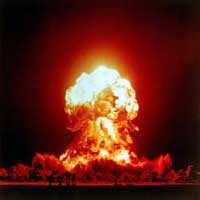Bar Chart Perhaps the most popular charting
Post# of 18539

Bar Chart
Perhaps the most popular charting method is the bar chart. The high, low and close are required to form the price plot for each period of a bar chart. The high and low are represented by the top and bottom of the vertical bar and the close is the short horizontal line crossing the vertical bar. On a daily chart, each bar represents the high, low and close for a particular day. Weekly charts would have a bar for each week based on Friday's close and the high and low for that week.
Bar charts can also be displayed using the open, high, low and close. The only difference is the addition of the open price, which is displayed as a short horizontal line extending to the left of the bar. Whether or not a bar chart includes the open depends on the data available.
Bar charts can be effective for displaying a large amount of data. Using candlesticks, 200 data points can take up a lot of room and look cluttered. Line charts show less clutter, but do not offer as much detail (no high-low range). The individual bars that make up the bar chart are relatively skinny, which allows users the ability to fit more bars before the chart gets cluttered. If you are not interested in the opening price, bar charts are an ideal method for analyzing the close relative to the high and low. In addition, bar charts that include the open will tend to get cluttered quicker. If you are interested in the opening price, candlestick charts probably offer a better alternative.
 (0)
(0) (0)
(0)